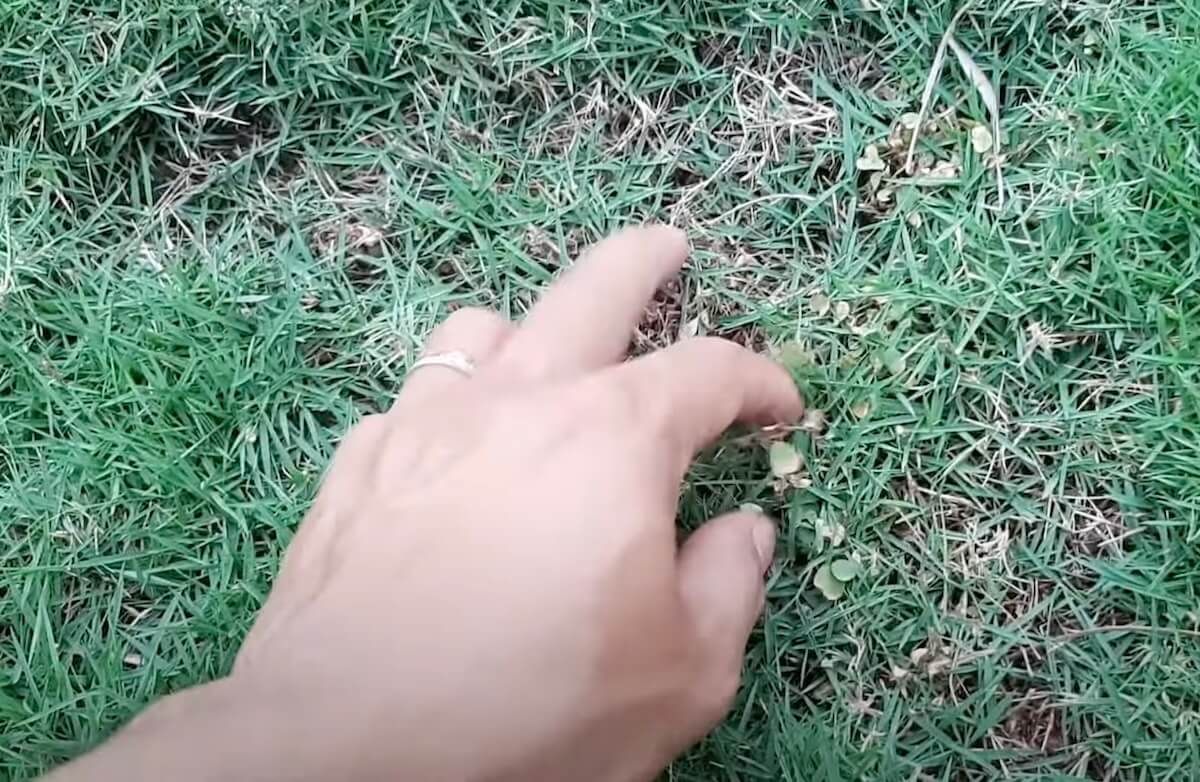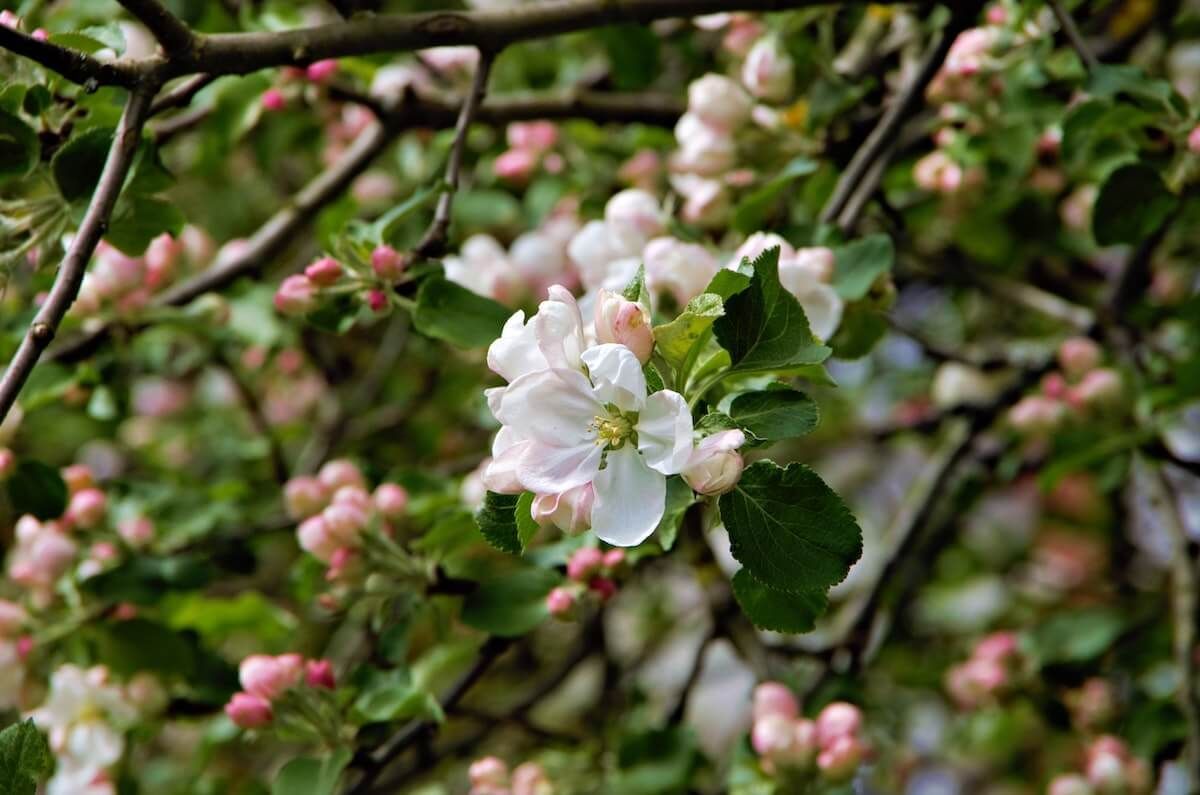What Does Crabgrass Look Like and How to Control

It may seem that the battle against crabgrass is never-ending, but there are ways to help manage this along with other common lawn problems.
Knowing how to kill crabgrass begins with first recognizing the weed when you see it. Anyone familiar with Bermuda grass will find this weed very similar in appearance.
If this pest has invaded your lawn or garden design, you probably need some help determining how to fight the battle in a way that provides you some assurance of winning against the invader.
Crabgrass really is an invader that makes it difficult to use weed control once it has gotten started. The two varieties commonly seen in the United States are not indigenous; they hail from Eurasia.
These species are: smooth crabgrass, Digitaria ischaemum, and hairy crabgrass, D. sanguinalis. The hairy species is the larger of the two grasses.
It is more common to find smooth crabgrass in turf while its hairy relative just loves to grow in orchards and agricultural areas. Crowfoot and summer grass are two of the many other common names by which this weed is known.
If the crabgrass you are battling is low-growing and reaches only about 6 inches in height at maturity with dark green true leaves that are smooth, about ¼ to 1/3 inch across, and as long as 5 inches, you are fighting smooth crabgrass.
This weed may grow to create patches in your lawn or around your garden plants and even grow together into huge clumps. The flower stalk has branches that branch from the main stem at intervals of about 1/8th to ¼ inch.
Large, hairy crabgrass, when it does invade a lawn, will appear as a low-growing annual that spreads from seeds but also from nodes that are under the soil.
If this type of grass is not mowed, it will easily reach 2 feet in height. The leaves on this grass, when young, are light green and have tiny hairs on them, clearly delineating them from the smooth version.
The rest of the plant looks very similar to smooth crab grass except the branches are longer at the end of seed stalk.
In some regions, the growth cycle of crabgrass begins as early as mid-January; in colder climates, the cycle may begin as late as early April.
Fortunately, where it does germinate early, the growth is fairly slow until mid-May when this weed springs forth with shoots and then flowers in July and August.
In temperate areas, the weed may even over-winter and produce a second seed crop in early spring or very early summer. In tropical areas, the growth cycle is endless.
To germinate, the soil temperature must reach at least 50 degrees Fahrenheit for at least three days, which means areas like southern Florida rarely have any help from Mother Nature against preventing a year-round growth cycle for these grasses.
To get rid of crabgrass it is best to be proactive and get started before the crabgrass begins to germinate in the soil.
You can win the battle against crabgrass by maintaining a healthy, lush lawn. You can then sit back and enjoy your victory.
Beware, however, that seeds hiding in your lawn are able to germinate as much as three years later! If you find that you are losing the battle with crabgrass for more than two years in a row, it is best to seek out professional landscaping advice before you lose your entire lawn to this weed.
Bermuda Grass
Bermuda Grass has its name for a reason! It absolutely loves the tropical, warm climates and is without a doubt one of the most popular turfs for southern landscaping.
Bermuda Grass is often found in southeast landscaping on golf courses, recreation areas, parks, and sports fields because not only does it do well in the sun, it does well with extensive foot traffic.
The reason Bermuda Grass is so popular in high-traffic areas is that it only requires mild to moderate amounts of effort to maintain.
This type of grass is actually very difficult to kill off and can go for up to 2-3 weeks without being watered. Of course, the more Bermuda Grass is watered, the better it will be in the hot summer months.
Another reason Bermuda Grass is so popular is because it can easily be established in lawns with complete coverage in a newly sodden lawn in one season or within 60-90 days.
Because Bermuda Grass is so easy to maintain and is easily established, it can be extremely frustrating to deal with for those home landscapers who don’t want Bermuda Grass on their lawns.
This type of grass has a very similar look and feel to crabgrass and may be a little tough, so if a lawn is used often for children to play on or for outdoor parties, homeowners may want to consider a different type of turf. Other homeowners want to get rid of Bermuda Grass simply because it is so invasive.
Since Bermuda Grass absolutely loves the heat, it will be growing the most robustly in the heat of the summer. The best landscaping advice is to try to kill Bermuda Grass during this time period, if at all possible.
Strange as it may sound, it is best to get to Bermuda Grass when it is well established, so you may even want to consider a fertilizer or several waterings to heighten the blades before getting rid of the grass. The longer the grass blades, the more effective the grass killer will be in removing the grass from the lawn.
Most landscaping professionals will suggest gardeners to use a herbicide with glyphosate. This can be found in common weed killers like Roundup, Touchdown, and Vantage.
Keep in mind that it will be important to purchase enough of these products to cover the entire lawn because Bermuda Grass will come back to life if not completely killed and removed from the lawn.
The only surefire way to know if Bermuda Grass is completely removed from the lawn is to go through several applications of a glyphosate herbicide.
Unfortunately, this does not even ensure that Bermuda Grass will ever be completely removed from a lawn, especially if it covers a good portion of the lawn.
Using the glyphosate herbicide on a regular basis will at the very least suppress the amount of Bermuda Grass in the lawn.
Keep in mind that following the directions on a herbicide bottle is extremely important when dealing with lawn turf because overusing the glyphosate herbicide, either with too much in one application or with too many applications too close together, can kill the remainder of other types of grass in the lawn.
After using the herbicide it is essential to wait a few hours for the chemicals to penetrate the lawn before watering.
Although some homeowners may not recognize crabgrass by its name, they will recognize that it is one of many common lawn problems that have the ability to take over an entire lawn by summer’s end.
Most of the time crabgrass leaves have a rough texture, are sharply pointed, flat, and may appear to be a pale bluish-green color.
Homeowners that have crabgrass in their yards will recognize it because it may be rough to walk on and will definitely not make for a pleasant place to sit during the summer months.
Figuring out how to kill crabgrass and promote continual weed control is a problem that plagues many homeowners throughout the country, especially in the summer months, primarily because it is difficult to get rid of once it creeps up.
One of the most frustrating problems for many gardeners who love their lawns is to figure out not only how to kill crabgrass, but how to keep it from coming back.
The best method of action to take when it comes to figuring out how to kill crabgrass is to take action before crabgrass begins.
Crabgrass is a warm-season weed so most gardeners don’t bother dealing with crabgrass until they see it appear in their lawns, somewhere between June and August.
Most of the time, this is too late because the crabgrass seeds are already in the soil and will be hard to remove from the entire lawn.
Since crabgrass is spread through its seeds, the seeds will just continue to germinate as the warm summer months continue, leaving some homeowners with an abundance of crabgrass at the end of the season, despite their best efforts to figure out a way to kill crabgrass.
Instead, crabgrass needs to be eliminated when it begins to germinate in the late spring months. Depending on what part of the country crabgrass is growing in, will determine when and how to kill crabgrass.
The seeds of crabgrass begin to germinate when the temperatures reach approximately 55-60 degrees Fahrenheit.
For cooler climate states, this means dealing with crabgrass between March and April but in southern landscaping and southwest landscaping, this may mean figuring out how to kill crabgrass as early as late January or February.
So the next question is how to kill crabgrass before it starts to show in your beautiful late summer lawn? The best method is to use a pre-emergent herbicide that is applied to the lawn before weeds start to germinate and spread.
The purpose of preemergent herbicides is to stop crabgrass before it begins to break through the surface of the soil.
To kill crabgrass properly, it is essential to apply the herbicide just as the crabgrass has begun to germinate, or right when the temperatures in the area have reached 55-60 degrees Fahrenheit.
One of the most important factors to keep in mind when using a herbicide to kill crabgrass is to find a product that has the proper active ingredients.
Dithiopyr, Ethofumesate, Oxadiazon, Pendimethalin, Prodiamine, and Trifluralin will all kill crabgrass before it begins.
One or more of these ingredients can be found in almost every herbicide, although it is important to choose a weed killer that has enough of at least one of these active ingredients to actually kill crabgrass or keep it from breaking through the soil.
It is essential to follow the instructions on the herbicide bottle to make sure not to apply too much or too little of the product.
This can make all the difference in trying to kill crabgrass. Once the herbicide is laid down, it is important to always water the lawn afterward, unless the instructions say otherwise.
This will help activate the ingredients in the herbicide. Most herbicide crabgrass killers will suggest reapplying at some point, but be sure to follow the directions so as not to reapply too soon.
So can anything be done to kill crabgrass if you are in the middle of summer and crabgrass has already spread throughout your lawn and garden?
If it is really late in the summer season and crabgrass has taken over your lawn, it may just be the safest to wait and let the cool weather kill crabgrass weeds. Then start fresh in the spring.
If you live in a warm climate environment where the warm weather will continue on into the fall months, you may want to consider a post-emergent herbicide.
This type of herbicide will help to kill crabgrass that is already spreading throughout the lawn. The only problem with using a post-emergent herbicide is that it may be either too strong or too weak for the lawn.
In either case, gardeners may end up frustrated because the herbicide will not kill crabgrass or frustrated that it has killed the remainder of the good grass in the lawn.
Three active ingredients to look for in a post-emergent herbicide to kill crabgrass are Fenoxaprop-p-ethyl, MSMA, or Quinclorac.
Unfortunately, while all three of these herbicides will do an excellent job at controlling or eliminating immature crabgrass, they will not do much to kill crabgrass that is already well-established.
In the case of well-established crabgrass, it is best to just weather the storm for the season and wait until the cool weather kills the remainder of the crabgrass weeds.
















